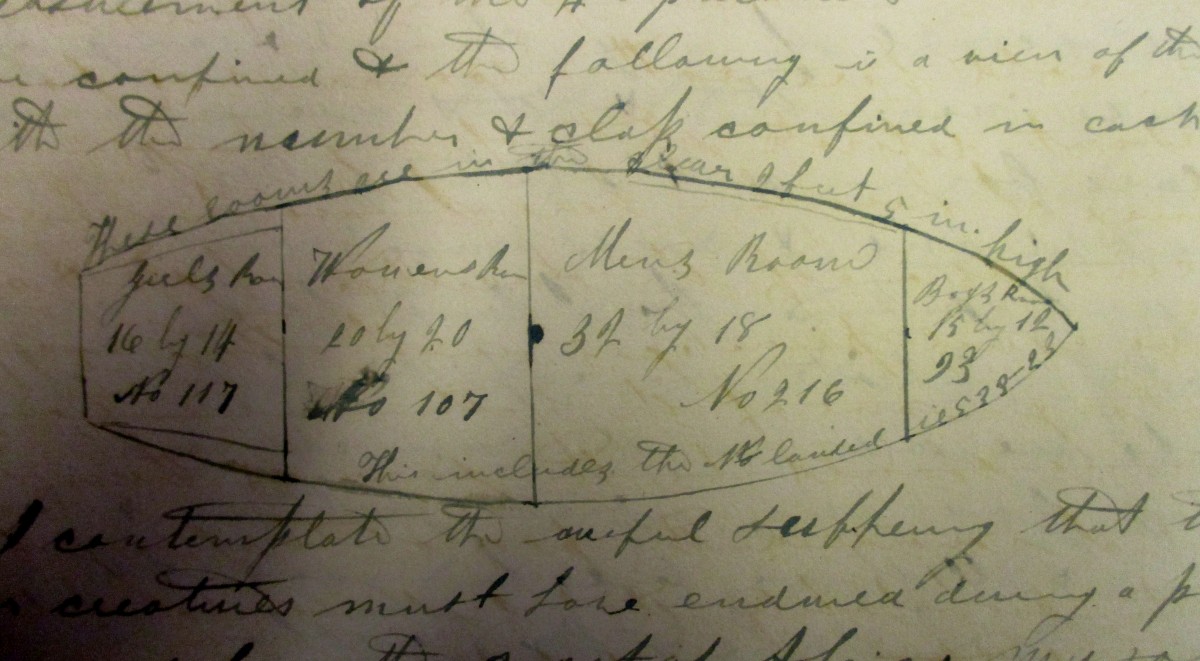
I often tell people that I do what I do for the young adults around me and the folks up in the graveyard. There is no contradiction between grass-roots presence with college and university students and hard-nosed scholarship that listens to the past.
That is why many of us at Adrian College got excited a few weeks ago when our alumni director found a nondescript cardboard box in a storage room. Among the relatively mundane contents was an old, old document – some kind of journal, actually. While a soiled bookplate indicated that the artifact had once been in our library, there is no record of it among our current archival collection. The piece measures 7 ¾” X 11” and contains 100 pages of writing. It begins on July 14, 1839 and ends on March 14, 1841. Because the text mentions a connection with Oberlin College, some wondered if this was an early journal of our founding president, Asa Mahan. Mahan is best known for his time at Oberlin (1835-1850), but he came to Michigan and established Adrian College in 1859.
However, our find also contained references to Jamaica and mission work there following the implementation of British emancipation policies. There is a well-established link between Oberlin and Jamaican missions. Gale L. Kenny’s book, Contentious Liberties (2010), analyzes much of the story. Yet identifying the author of our artifact was no easy task. Many Oberlin-related people were a part of the Jamaican enterprise.
Some serious sleuthing has led us to conclude that the journal in question was indeed the personal record of Rev. David Stedman Ingraham, often considered the founder of the Oberlin mission to Jamaica. How can we make such a claim?
First, the journal entries match well with the published letters of Theodore Weld, Angelina Grimke, and Sarah Grimke. On June 12, 1840 the journal writer speaks of being back in the United States visiting the Weld/Grimke home, Belleville, New Jersey. On June 18, 1840 Weld wrote Gerrit and Anne Smith that “a beloved Brother, Rev. D. S. Ingraham, one of the ‘Lane Rebels’ – now a missionary to the emancipated slaves in Jamaica” was visiting his Belleville home. Then there is the fact that Ingraham married Oberlin student Elizabeth Hartson. Hartson is listed in official Oberlin record as Betsey Hartson. The journal writer speaks of traveling west from New Jersey in later June 1840. While visiting old friends in New York State, the writer recalls being there a few years earlier with “my dear Betsey.” Perhaps most convincing, the writer tells of visiting “dear Uncle George’s” and “dear Uncle Aaron Stedman” while in New York State. George and Aaron Stedman were uncles of Rev. David “Stedman” Ingraham. Finally, the writer continued west during the summer of 1840 and wrote from “home” in Wayne, Michigan on July 27. David Ingraham is listed among Oberlin College records as hailing from Wayne (or Nankin), Michigan. His parents are buried among a graveyard in present-day Livonia, Michigan. Throughout the journal, the writer speaks of ill health – a serious lung disease. Rev. David Stedman Ingraham died from lung disease (probably tuberculosis) on a return trip to the United States in 1841. Death came while staying at the Weld/Grimke home during the summer of 1841, one year following his earlier visit.
The twenty-second page of this journal speaks with pain and power. Before his trip home, on Christmas day 1839, Rev. Ingraham went down to the harbor at Port Royal, Jamaica and inspected a recently impounded “slave brig,” the Ulysses. He documented the way 556 people were abused over the course of a fifty day voyage, and he created a diagram of the ship. The journal entry for that day exclaims: “It seems as if the church were asleep.”
While I understand the language of seeking some “usable past,” I would suggest that this find addresses us on a different level. Years ago, theologian Nelle Morton spoke of “hearing people to speech.” The hard work of listening (even to those in the graveyard) can be advocacy – love and justice that struggle to hear the voices of those too often silenced. I think not only of Ingraham but especially of the 556 people on that ship. Who were they? What is their story? What are they still trying to say? We do not know – yet, but it is time someone listened to them and countless millions today who are told to keep quiet. For now, silence is their voice, but that should change.
Scholarship around slavery past and present is so combustible, at least in part, because it confronts issues of agency and voice. A core aspect of personhood is not only having a story but claiming the interpretive prerogative to define the meaning of one’s story. Frederick Douglass taught us this when he left the paternalism of New England for Rochester, New York.
Finding an appropriate way to hear what Ingraham’s journal has to say is not going to be easy, but it will probably require putting aside some agendas. First, we must listen.
Rev. Dr. Chris Momany is the chaplain and a member of the Department of Philosophy/Religion at Adrian College. He is a graduate of Adrian College, Princeton Theological Seminary, and Drew University. His writing appears in both academic and more accessible publications. Dr. Momany’s current research explores the relationship between antebellum moral philosophy and the antislavery movement.
